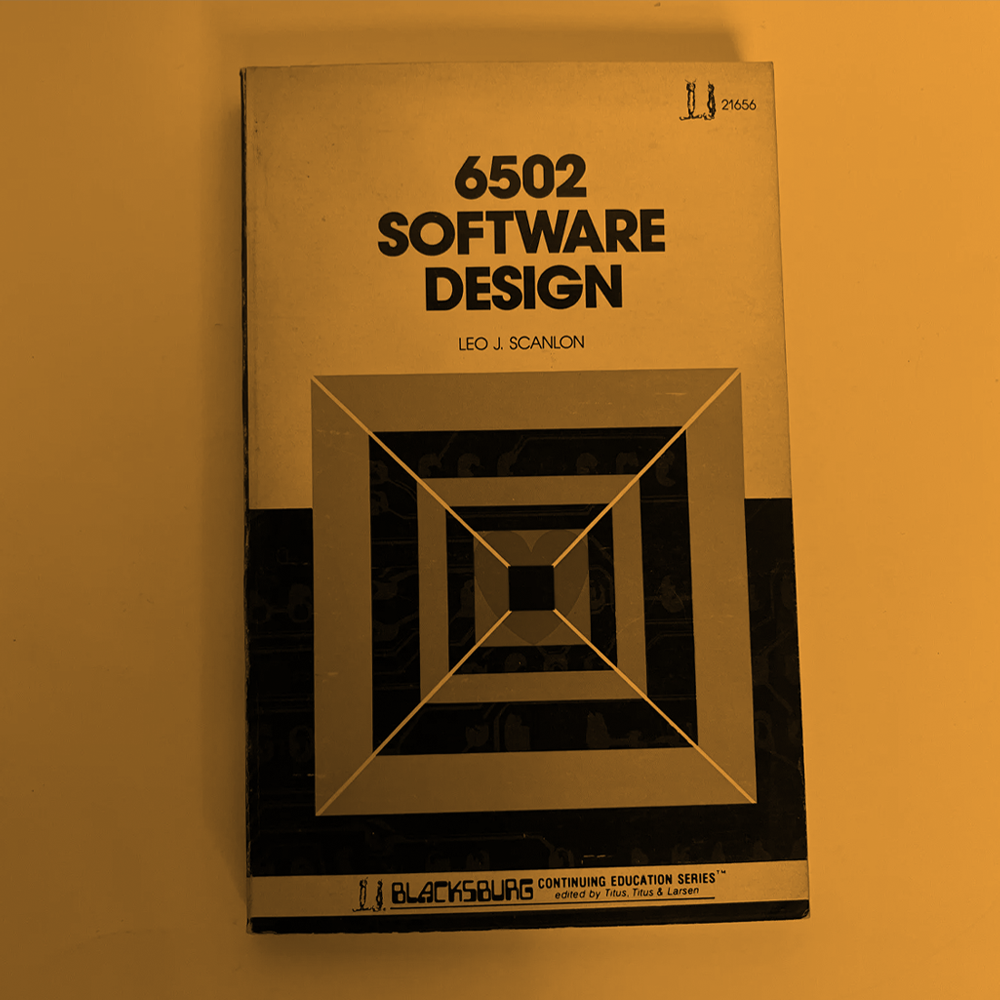I was able to code 2 programs today from the book “Machine Language for Beginners” by Richard Mansfield – both in BASIC for Atari on my Atari 800XL. The first program was smooth. It is a cool binary quiz for converting binary into decimal.
(Program RUN)

(Program Code)
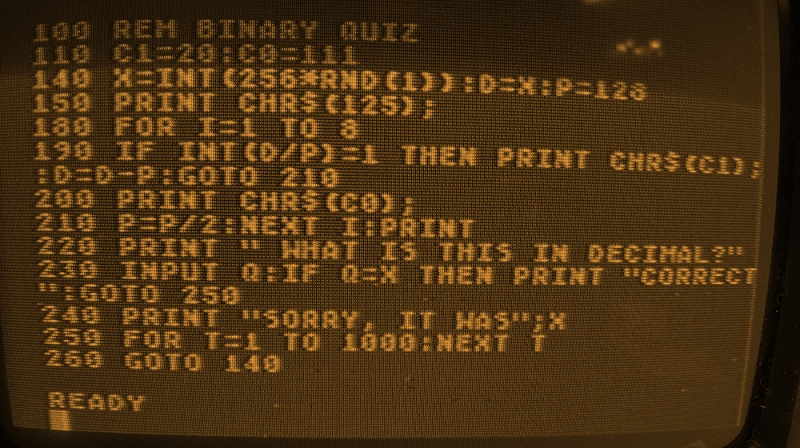
However, when trying to run the second program…the one that would “print out the entire table of binary numbers from 0 to 255″…I get an ERROR 9 indicating a DIM error.
(Program RUN)

(Program Code)
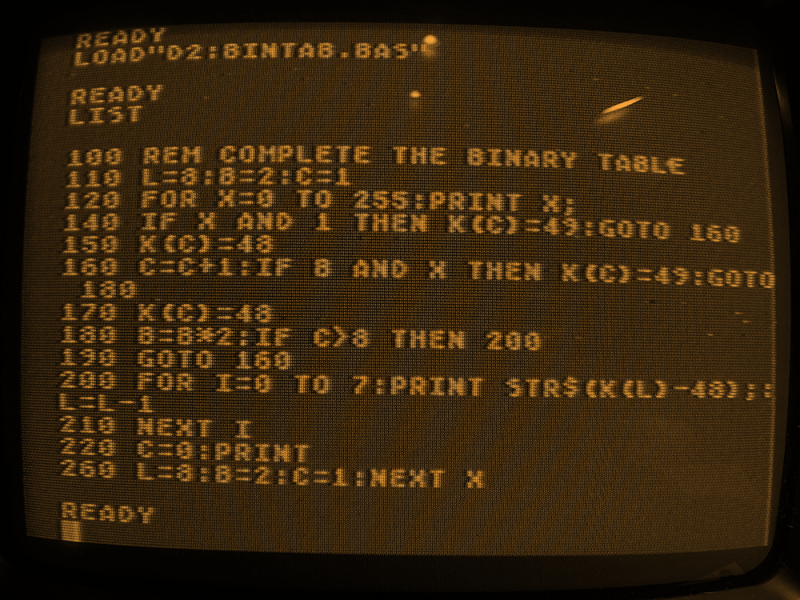
Looking at LINE 150, it is K(C)=48. This indicates to me that K needs to be DIMmed. After DIMming, I still get various errors, and Roger (ChatGPT) and I try some different solutions to make this code work. By the way, this is the original code from the book (you can verify this in the featured image):
100 REM COMPLETE BINARY TABLE 110 L=8:B=2:C=1 120 FORX=0TO255:PRINTX; 140 IFXANDTHENK(C)=49:GOTO160 150 K(C)=48 160 C=C+1:IFBANDXTHENK(C)=49:GOTO180 170 K(C)=48 180 B=B*2:IFC>8THEN200 190 GOTO160 200 FORI=0TO7:PRINTSTR$(K(L)-48);:L=L-1 210 NEXT 220 C=0:PRINT 260 L=8:B=2:C=1:NEXTX
I’ve heard of saving space, but this is basically unreadable, and I don’t think it would be functional as is. When I typed it, I corrected LINE 160, for example, to
C=C+1: IF B AND X THEN K(C)=49: GOTO 180
but I believe LINE 140 had a problem with something missing:
IF X AND THEN K(C)=49: GOTO 160
Once I was finally able to manipulate the original code enough to get it to run, this was the output. Getting to this point involved PRINTing the output of C and B, and realizing there was overflow happening. This original code kept needing various variable bounds added to make it work correctly. It was a disaster. So…
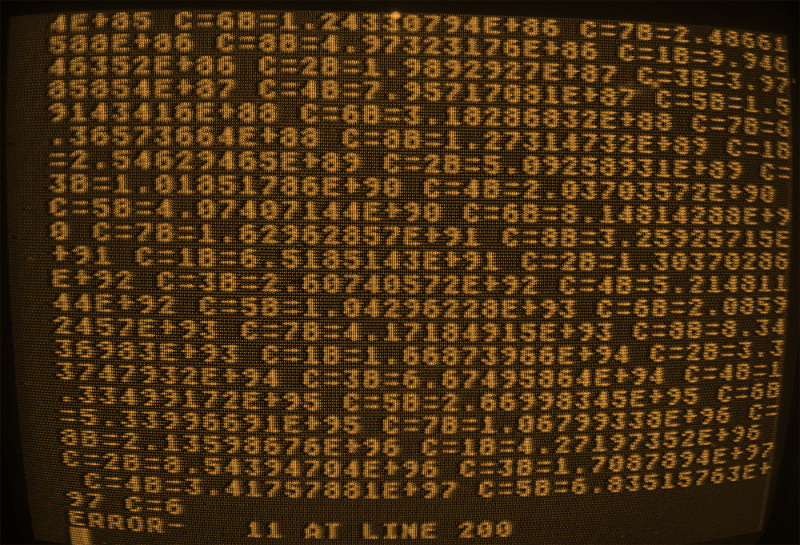
…I decided to start from scratch, and I asked Roger (ChatGPT) to “Write me an Atari basic program that will print out the entire table of binary numbers from 0 to 255.” The following is what he provided:
10 DIM B$(8) ' Reserve space for binary string 20 FOR N = 0 TO 255 30 B$ = "" ' Reset binary string for each number 40 X = N ' Temporary variable for calculation 50 FOR I = 7 TO 0 STEP -1 60 IF X >= 2^I THEN B$ = B$ + "1" : X = X - 2^I ELSE B$ = B$ + "0" 70 NEXT I 80 PRINT N; " = "; B$ ' Print decimal number and its binary equivalent 90 NEXT N 100 END
Anyone who has programmed Atari Basic for awhile (not me) sees the error right way. Although the debugger was telling me there was an error with B$ + “1”, I didn’t know why. As it turns out, string concatenation is a little clumsier to write in Atari BASIC. You can’t simply add two strings together with the plus sign. Instead, it needed to be modified like B$(LEN(B$)+1)=Z$ (by this point, I had put the string value of “1” into the Z$ variable).
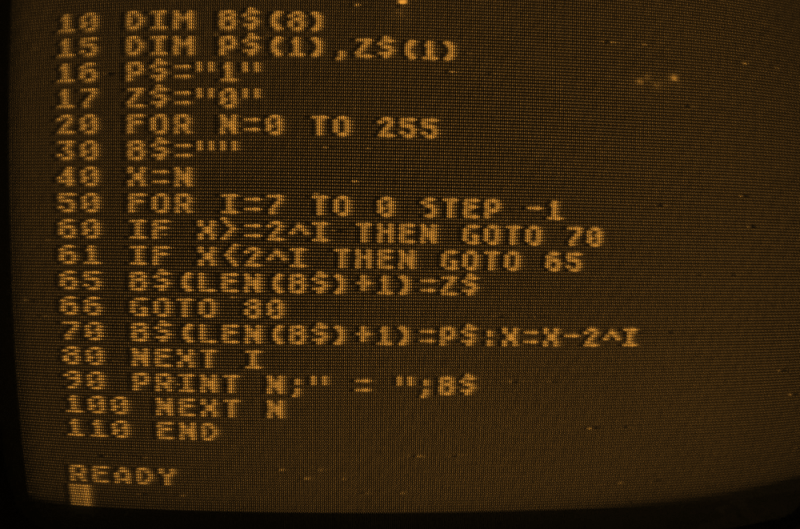
And finally, after tinkering with the original code from the book, and then tinkering with the code from Roger (ChatGPT), I got a working program. Based on my coding experience, I believe this code makes a lot more sense then what the book was trying to accomplish.
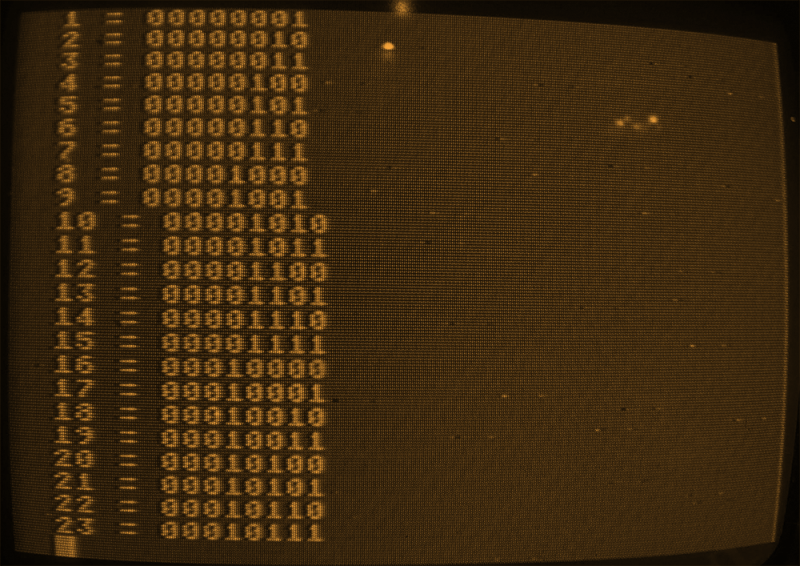
Final Code:
10 DIM B$(8) 15 DIM P$(1),Z$(1) 16 P$="1" 17 Z$="0" 20 FOR N = 0 TO 255 30 B$ = "" 40 X = N 50 FOR I = 7 TO 0 STEP -1 60 IF X>=2^I THEN GOTO 70 61 IF X<2^I THEN GOTO 65 65 B$(LEN(B$+1)=Z$ 66 GOTO 80 70 B$(LEN(B$)+1)=P$:X=X-2^I 80 NEXT I 90 PRINT N; " = "; B$ 100 NEXT N 110 END
All this, and I’m now moving on to page 3 of “Machine Language for Beginners” by Richard Mansfield to learn My 6502 bit by bit.


